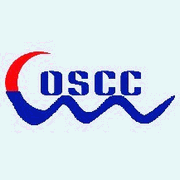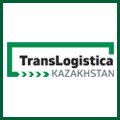Scania is now taking a further step in its efforts to reduce the climate impact from its own operations. Using renewable bioethanol as a fuel rather than fossil-based diesel will help reduce the climate impact of carbon dioxide emissions from Scania’s own goods transport services at its production facilities in Södertälje, Sweden, by approximately 70 percent. The eight ethanol trucks that are now being put into operation will contribute to a decrease in CO2 emissions equal to that of 12 normal homes heated by fossil-based electrical energy.
“As a supplier of transport solutions, it is important for us to take the lead in developing sustainable alternative solutions and demonstrate how sustainability and efficiency are linked in practice,” says Anders Nielsen, Scania’s Head of Production and Logistics.
Scania currently offers a series of climate- and energy-efficient products and services – Ecolution by Scania – that helps transport companies reduce their carbon dioxide emissions and maximise revenue from their truck and bus operations. Ecolution by Scania is a comprehensive solution including optimised vehicles, driver training and continuous monitoring of both vehicles and drivers. In distribution services, switching to vehicles that run on biofuels will lead to a substantial reduction in climate impact.
In Södertälje, Scania primarily operates trucks to transport components and packaging material between its various production and assembly workshops. These internal freight traffic operations were recently taken over by the Scania Transport Laboratory, a wholly-owned subsidiary that tests and evaluates vehicle characteristics and performance in commercial haulage. Its task also includes developing and monitoring Scania’s drivers with regard to economic and safe driving.
“By switching to ethanol, Scania is demonstrating that sustainable solutions can be achieved – here and now – with technology that is already available today,” says Anders Nielsen.
To help increase the availability of renewable fuels for commercial vehicles, Scania will open a public filling station in Södertälje later this year with fuel dispensers for RME (rapeseed methyl ester), ED95 (ethanol) and biogas.
Source Scania
Kongsberg Maritime has been selected to provide a range of rugged compact Power Over Ethernet (POE) cameras to Montreal-based L-3 MAPPS Inc. (L-3 MAPPS) as part of the Canadian Navy’s HALIFAX Class Frigate upgrade.
The HALIFAX class frigate (hull designation FFH) is a class of 12 multi-role patrol frigates that has served the Canadian Forces since 1992. In 2007, the Canadian government announced a planned refit of the HALIFAX class known as the HALIFAX Class Modernization Project.
L-3 MAPPS is the prime contractor for the supply of its Integrated Platform Management System (IPMS) upgrade. The L-3 IPMS provides integrated monitoring and control of ship propulsion, electrical functions, damage control machinery and systems. The digital CCTV system, typically used for monitoring ship machinery spaces, can be displayed on the IPMS consoles. The system can be configured to automatically display the CCTV image as soon as an active fire sensor is detected in a compartment equipped with CCTV.
Following its success with other Navy programs, Kongsberg Maritime has integrated the latest camera technology into a unique, extremely robust and compact package. All cameras feature the latest H.264 video compression and will work from any standard POE-enabled network switch. Camera options include megapixel colour day/night cameras with IR LEDs and LWIR thermal cameras. All equipment has been fully qualified for naval use, including MIL-STD-901D Shock (Grade A) and MIL-STD-461E for EMI.
Source Kongsberg Maritime
Schindellegi/Switzerland, March 1, 2012 – The Kuehne + Nagel Group is setting new standards in the handling of pharmceutical products. As part of its KN PharmaChain product, the company is introducing newly developed active wireless sensors which record and transmit the temperature of pharmaceutical airfreight shipments along the entire supply chain.
The use of active wireless sensors is a major achievement in the segment of seamless airfreight cold chains for pharmaceutical products. Generally, security rules prohibit the active use of mobile sensors during the air transport. However, together with a number of airline partners,Kuehne + Nagel thoroughly tested low-emission devices which can stay active during the flight so that the temperature is being constantly measured and reported practically in real-time. Kuehne + Nagel is the first company to provide this service to customers from the pharmaceutical and health care industry. In order to guarantee seamless temperature visibility from pick-up to delivery of the cargo,warehouses and logistics facilities both of Kuehne + Nagel and its airline partners will be equipped with transmitting technology. The same applies to pre-and-on-carriage vehicles. The service is part of a comprehensive package of new tailor-made airfreight offerings to the pharmaceutical industry. Full transparency is provided to custom rs as the temperature indications can be viewed directly inside the KN Login online tool.
“By introducing this service we are setting new, quite revolutionary standards in the cold chain airfreight market and we will extend the offering step by step to other industry groups”, explains Tim Scharwath, Executive Vice President Air Logistics of Kuehne + Nagel International AG.
Source Kuehne + Nagel
2012-03-02
The apprentices from the insolvent printing press manufacturer manroland will be joining MAN Diesel & Turbo on 1st March 2012. The company is taking over 116 of the total of 145 apprentices, who are working in Augsburg. The remaining 30 apprentices will be employed at manroland webservice, a successor company to the printing press manufacturing firm.
"We are absolutely delighted to be able to offer these opportunities to the manroland apprentices," says Dr. René Umlauft, CEO of MAN Diesel & Turbo and deputy member of the Executive Board of MAN SE. "It is very important for us to safeguard the successful training and professional futures of the young people."
In February 2011, MAN Diesel & Turbo welcomed 20 trainees from man-roland, with a further 16 switching to RENK AG in Augsburg, a company in which the MAN Group holds a majority share. MAN Diesel & Turbo is investing an additional approximately Euro 6 million in its training for taking over the apprentices.
The MAN Training Academy in Augsburg is the largest training centre in Bavarian Swabia. Currently around 470 apprentices from the companies MAN Diesel & Turbo, RENK and manroland, as well as further partner firms in the Augsburg economic area, receive training in eleven industrial/technical disciplines.
Source MAN SE
HAGUE-based APM Terminals, Maersk's port operator, has posted a 10 per cent year-on-year increase in operating profit to US$1.05 billion in 2011, making the results the "strongest ever", said CEO Kim Fejfer.
"If there were such a thing as a market share for expansion, we believe that APM Terminals would be the number one global port operator in 2011 in that category," he said.
The terminal operator net operating profit after tax in 2011 was $649 million, while profits, excluding sales gains and impairment losses, rose 24 per cent compared to $611 million in the previous year.
"This shows that APM Terminals is tracking well towards our long term goal of being the best and most profitable global port operator in the world. Profitability is our licence to grow," said Mr Fejfer.
And the return on invested capital, considered the "most important single key figure for the port operator" reached 13.1 per cent, showing a significant increase in profitability from 2010 where the return percentage was 10.4 per cent when corrected for divestment gains and special items.
In response to the expansion plan for the next decade, Mr Fejfer said the company is "eager to secure the lion's share of global growth opportunities."
Said Mr Fejfer: "We committed more than $3 billion to infrastructure development and facility expansion in 2011 and expect to do something similar in 2012."
During 2011, APM Terminals added five new locations to its company portfolio, including Poti in Georgia; Moin in Costa Rica; Callao in Peru, Gothenburg in Sweden and Lazaro Cardenas in Mexico. The terminal operator has also recently announced upcoming investments in Izmir, Turkey.
Regarding container handling volumes, it handled 33.5 million TEU in 2011, a eight per cent growth year on year.
"We are very humble about the fact that although financial performance went well some of our customers' experience has been more mixed as operations in container terminals in North Africa and the Middle East were negatively influenced by unrest related to the Arab Spring during 2011."
Volumes from customers outside the company's ownership sphere increased by 11 per cent year on year and now constitute 46 per cent of volumes handled.
"2011 was also the year where we developed and implemented a new corporate visual identity to enhance the APM Terminals brand as a truly independent company," he said.
Source Shipping Gazette - Daily Shipping News
THE captain and second officer of the stricken 3,036-TEU containership Rena have pleaded guilty in Tauranga District Court of New Zealand for mishandling the vessel and forging documents.
Both the 44-year-old captain and 37-year-old navigation officer are Filipinos, and were charged after an investigation into the ship's collision with Astrolabe Reef off Tauranga on October 5, reported London's Containerisation International. Both men are on bail and await sentencing on May 25 They face a maximum of seven years imprisonment.
New Zealand environment minister, Nick Smith, said earlier that a "crude estimate" of MSC-chartered and Costamar-owned Rena's salvage cost was NZ$130 million (US$108 million), but the final cost is likely to be higher as the operation of removing the containers continues.
Community leaders have asked MSC Costamare bear some of the costs involved, reported New Zealand's Bay of Plenty Times.
Source Shipping Gazette - Daily Shipping News
FRANCE's main gateway Le Havre has registered an overall traffic decline in 2011, but container volumes had returned to growth by year end, despite slip in the fourth quarter.
Container traffic, which represents a third of Le Havre's 68.5 million tonnes of annual cargo, found its way back to growth over the course of the year, but ended the period with a decline of six per cent mainly due to a 28 per cent drop in transshipment volumes.
Poor first quarter results with a throughput of 483,000 TEU were partly offset over the following months, reported London's International Freighting Weekly, especially in the summer when the facility handled 600,000 TEU, but fourth quarter traffic slowed again to 576,000 TEU.
A port spokesman said gains came from productivity improvements, but that this could not counter the tough economic conditions, which returned later in the year. Traffic handled by inland waterways, although a small proportion of the result, was a healthy and rapidly growing component of overall box volumes.
The results reflected the "strained economic situation" in global markets, according to a port spokesman.
Despite an overall upturn of four per cent in the second half compared to the same period in 2010, annual tonnage processed at Le Havre declined by four per cent, with port officials blaming France's shrinking export trade and lower consumption by French consumers.
Source Shipping Gazette - Daily Shipping News
NEW YORK listed Seaspan, with major offices in Hong Kong and Vancouver but registered in the Marshall Islands, has posted a 83.4 per cent decline in 2011 net profit to US$23.5 million.
The company it achieved vessel utilisation of 99.5 per cent for the fourth quarter and 99.3 per cent for the full year 2011, according to the company statement.
It also received deliveries of 10 new vessels in 2011, bringing Seaspan's operating fleet to 65 vessels at the end of 2011, which include four 13,100-TEU ships, chartered to Cosco.
"Seaspan once again grew both its fleet and revenue stream under contract, achieved strong utilisation and increased net earnings and cash flow. In addition to taking delivery of 10 vessels that commenced fixed-rate time charters with leading liner companies, we took advantage of a compelling ship acquisition environment to commence our next phase of fleet growth.
"As we pursue opportunities to further grow our fleet, we intend to continue to capitalise on our SAVER vessel design, which we believe provides customers with improved efficiency and operational savings."
In the fourth quarter, the company signed agreements with MSC to bareboat charter the world's second largest carrier four 4,800-TEU vessels, each for a five-year term, with effect from October and November 2011.
As a result, Seaspan posted a loss on vessels of $16.2 million for 2011. Said the company statement: "MSC has agreed to purchase the vessels for $5 million each at the end of the five-year bareboat charter terms. Each transaction is considered a sales-type lease and is accounted for as a disposition of vessels upon delivery of each vessel."
Source Shipping Gazette - Daily Shipping News
US President Barack Obama has created an interagency government office to investigate unfair global trade practices by countries including China, Bloomberg reports.
The Interagency Trade Enforcement Centre will sit within the US Trade Representative office, and include staff drawn from the departments of Commerce, Agriculture, Homeland Security, Justice, State and Treasury, as well as US intelligence agencies.
"We are doubling down on the administration's commitment to strong trade enforcement," said Ron Kirk, the US Trade Representative. "We'll continue to press our trading partners" to comply with World Trade Organisation rules "and abide by obligations."
The White House budget submitted to Congress has requested US$26 million in funding for the office to include at least 50 staff. The US has filed five complaints against China at the WTO since Obama took office in 2009.
Source Shipping Gazette - Daily Shipping News
A PIRATE attack on a containership at the north end of the Strait of Hormuz has been deterred in a live fire incident involving private shipboard armed guards, Bloomberg reports.
According to the International Maritime Bureau (IMB) the attack by three boats on the 18,830-dwt vessel at the northern-most area of the Gulf of Oman is the closest ever attack on this area.
The strait carries 20 per cent of the world's oil, and used by tankers from Bahrain, Iran, Iraq, Kuwait, Qatar, Saudi Arabia and the UAE.
The EU Naval Force declined to name the vessel or record the attack as "gun fire was not exchanged". But the incident marks a significant move deeper into the northern most Gulf of Oman with two attacks since January, said IMB's London manager in London Cyrus Mody.
Britain has stationed the 8,000-ton destroyer HMS Daring to patrol the strait between Oman and Iran in response to Iranian threats to close the strait after western countries placed an embargo on its oil exports.
Source Shipping Gazette - Daily Shipping News
MEDITERRANEAN Shipping Company has deployed its first 12,500-TEU vessel on its Asia-US west coast trade, with the addition of the MSC Fabiola to its Pearl River Express' service (PRX) that is jointly operated with CMA CGM.
Come mid-March and the 11,660-TEU MSC Francesca is expected to join the PRX as well. Alphaliner said the two giants were earlier participating on Far East-Europe/Mediterranean services, and most recently on the Far East-North Europe Lion service. These ships are being replaced by newbuildings of 13,000 to 14,000 TEU.
The PRX was previously operated using six ships ranging in size from 8,000-9,000 TEU. The service calls at the ports of Fuzhou, Xiamen, Shenzhen-Chiwan, Hong Kong, Shenzhen-Yantian, Long Beach and Oakland.
This development means that the two US west coast ports will be tasked with handling their largest containership so far.
Maersk Line is already deploying 10,000-TEU vessels on its transpacific trade.
Source Shipping Gazette - Daily Shipping News
THE Westbound Transpacific Stabilisation Agreement (WTSA) has recommended a new round of dry cargo rate increases by US$50 or $100 per FEU for US-Asia routes.
For shipments of dry cargo, the increase will be US$50 per FEU from Los Angeles, Long Beach and Oakland to Asia. And for all other cargo, the increase will be $100 per FEU for moving via all-water or intermodal service from Pacific northwest ports, from inland US points and from the US east and the Gulf Coast, according to the WTSA statement.
WTSA carriers have also reaffirmed they will fully apply higher bunker fuel surcharges set to take effect on April 1 on top of the adjusted base rates.
Regarding fuel surcharges, WTSA executive director Brian Conrad said its member carriers understand many exporters of raw commodities and semi-finished goods have low margins. But he said carriers must seek a way to reverse losses estimated at more than $5 billion worldwide last year due to slowdown in demand, decline in rates and rise in operating costs, especially the drastic increase of fuel costs.
"Since the beginning of 2012 lines have seen their fuel costs rise steadily, and recently break through the previous record levels set in mid-2008," he said.
"With bunker fuel prices now exceeding $750 per metric ton and bunker accounting for 60 per cent of operating expense on a typical sailing, absorbing any portion of that cost on a sustained basis is not an option."
He added that other challenges confront the carriers include the cargo imbalance favouring eastbound imports from Asia two-to-one, high operating costs in getting empty containers to remote inland loading points, and capacity constraints due to the mix of heavier westbound cargo and empty equipment on a typical sailing.
"All of these factors add to cost and load planning complexity and must be adequately addressed in the rate structure," he said.
But he expressed optimistic views for the outlook: "This is a moment of significant opportunity for US exporters to Asia, and carriers want to ensure that service levels - in terms of schedule reliability, space and equipment availability, accurate and timely documentation, or other requirements - are in place to maximise that opportunity."
WTSA members include APL, Cosco, Evergreen, Hanjin, Hapag-Lloyd, Hyundai Merchant Marine (HMM), "K" Line, NYK, OOCL and Yang Ming.
Source Shipping Gazette - Daily Shipping News
CENTRAL China's Sichuan province has invested CNY266.8 billion (US$42.3 billion) of investment in shipping and road transport construction in the past four years, hitting a record high, reports Xinhua.
The province's total expressway mileage has increased to 6,537 kilometres in the last four years, up 250 per cent compared to 2007's rate on construction. The province's first expressway to the north, the Guangyuan to Shaanxi expressway was completed and put into service in May last year, making Chengdu connected to Xian and Beijing and cracking the transport bottleneck to the north.
Currently, eight new outbound expressways were completed and 12 are under construction including these linking Shaanxi, Guizhou, Gansu and Yunnan. The province commenced 42 projects with a increase mileage of 3,887 kilometres in the four years.
The province's Yibin port has started a trial operation, serving 1,000-tonne vessels running in the Yangtze River channel below Yibin. The port handled 8,055 TEU, 370,000 tonnes of bulk cargo and 3,800 tonnes of heavy goods in 2011. It is aiming to reach a container throughput of 30,000 TEU this year.
Source Shipping Gazette - Daily Shipping News
LAST year, Hainan province's container throughput and throughput tonnage both exceeded the benchmark level of one million TEU and one million tonnes last year, marking a step closer to the province's aim to become regional shipping centre and logistics hub, Xinhua reports.
Hainan's container throughput took over 20 years to grow from less than 10,000 TEU to 585,200 TEU in 2009, but took only two years to jump to 1.22 million TEU last year. This was stimulated by China's policy of developing the south China island into an international tourism spot issued in 2009.
The province's container shipping services have also increased to a new high of 37. Last year, port of Haikou launched feeder lines to southwest China's Fangcheng, Beihai, northern China's Qingdao and Tianjin. Port of Yangpu launches services to Guangzhou, Shanghai, Hong Kong, South East Asia, Australia, US west coast and Middle East.
By 2015, Hainan plans to merge its two major ports, Haikou and Yangpu, into one port cluster. Each of the two is estimated to have a throughput of over 100 million tonnes. The aggregate throughput of all ports in Hainan will double to 227 million tonnes.
Source Shipping Gazette - Daily Shipping News
West China's Xinjiang recorded an 11.9 per cent drop year on year in cross-border overland transport volume to 113,400 tonnes in January, reports Xinhua.
The passenger transport volume also fell 77 per cent to 16,200 person trips in the same month.
Source Shipping Gazette - Daily Shipping News
The magazine SEA has been published since 1935
International business magazine JŪRA MOPE SEA has been published since 1999
The first magazine in Eurasia in the four languages: English, Chinese, Russian and Lithuanian
|
|




.jpg)






